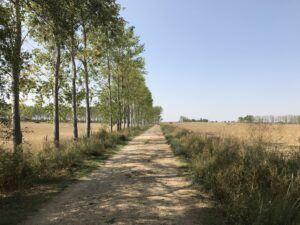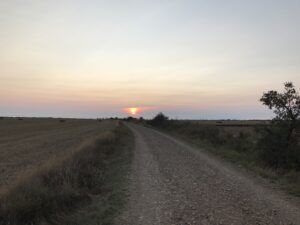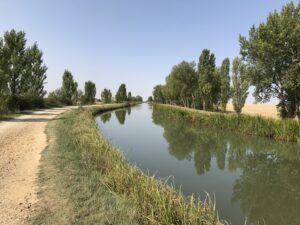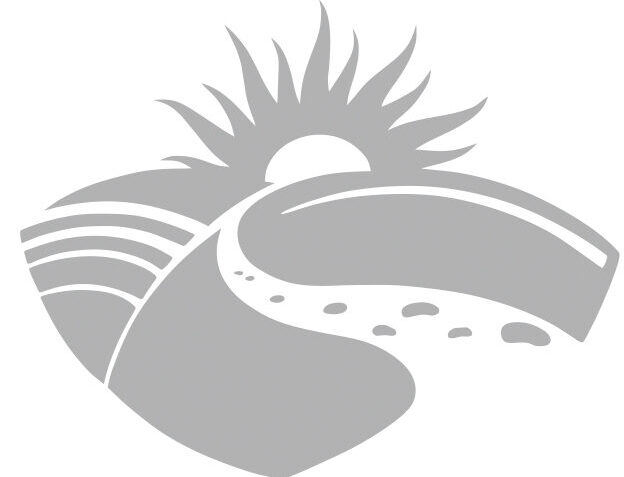
So you have decided to do the Camino de Santiago. The Camino itself has 11 walks that can be done from various parts of France, Spain and Portugal, though it is possible to start your Camino from your country. The most popular route is the Camino Frances (The French Way) which goes from the City of Saint-Jean-Pied-de-Port in southern France and crosses the border into Spain over the French Pyrenees and stretches across the northern part of Spain always going West. This total route is approximately 500 miles or 780 km.
The French way has 33 stages and will take approximately 6 weeks to complete by walking. Each stage represents a day’s walking. People have been doing the Camino since the ninth century. Then, they did it mainly by walking or on horseback whereas nowadays, it is possible to do it by walking, on horseback, by wheelchair and by bicycle. The hikers are known as Peregrinos or Pilgrims. In fact, in 2022, 414,340 walked it, 545 went by horseback, 448 sailed and 127 went by wheelchair and there remains an upward trend with 65% walking The French Way.
Dont under estimate the beauty that awaits. I find that like exercising in the morning, the hardest part of the days are getting up early before dawn sometimes, and the last ten minutes of a walk each day are difficult. In between, is scenery to behold. There are little villages every 5-7 km so there are plenty of places to stop and take a rest. So the road ahead isn’t always flat, but it is interesting.

You are always heading west so when the sun is setting you are coming to end of your walk. The Camino is called “the way”. It is up to you, the traveller to decide your way, i.e. where you start and end up. In the city of Santiago de Compostella, as long as you do at least 100 km of the Camino, you can receive a Compostella in Latin, which confirms that you have completed your way.
Weather patterns along the Camino
Again, the Camino de Santiago is open all year round. It can be quite cold in the winter months from November to March, with temperatures between (0-10 Celius). Not many people travel in these months. Several factors can determine the best time for you. If you want your solitude, then April and May or September and October may suit, as fewer people will be around and accommodation will be easier to find. For myself, my preference was warmer sunnier weather so I tended to go between the end of May to June or the end of August to mid-September. I made the mistake one year of going at the beginning of August and the temperature then was between 32-37 Celius, which was almost unbearable heat-wise for me.
With the summer comes the crowds and with this, the added difficulty of finding accommodation some nights. I will write more on this in another blog. If you prefer solitude, then, the off-peak times would play into your decision here. I mostly travelled solo but found some fascinating people along the way, that I have remained friends with to this day.
Tracing the Steps of History: The origin of the Pilgrimage of the Camino de Santiago
Having been informed of the discovery of the tomb of the Apostle Saint James by Bishop Teodomiro, Alfonso II, King of the Asturias, was said to be the first pilgrim to walk to Camino de Santiago to confirm this discovery and to give the city the royal seal of approval. Though it was considered a pilgrimage for many years, Pilgrim walked its route for many reasons.
There are eight main routes to the city of Camino de Santiago and these include:
- Camino Frances (The French Way)
- Camino Norte (The Northern Way)
- Camino Portugees (Central)
- Camino Portugees (Coastal route)
- Camino Ingles (The English Way)
- Camino Primitivo (The original way)
- Camino Via de la Plata (Seville to Santiago)
- Camino de Finisterre (Santiago to Finisterre)
All of these route have different stages. A stage is how much one typically walks in a day. Depending on the level incline or decline of the walk will generally determine the length of the stage which typically could be 12.5 -18 miles (20 – 28 km per day. These are suggestions as the Pilgrim may stop at any time along the route.
The best time to go then is determined by your preference for heat, how crowded or busy the route is and whether solitude is a preference for you.
Charting Your Path: How to Equip Yourself for the Camino Experience

When considering walking the Camino or doing the Camino by any means, the one strong suggestion I have is to travel light. In other articles, I will be getting into more detail on what to wear and bring, but nowadays, there are many alternatives for achieving this available on the market.
For example, there is a service that you take, whereby while staying at a hostel, they will take your backpack to the next hostel at the end of that stage. To avail of this service, you need then have a day pack where you can carry water and whatever you need for the day without too much weight on your back. This is a good service and many people use it. t However, for me, whatever I took, I carried on my back. Over the years, just from my experience, I brought one 35L backpack that would do me for the Camino. In my first Camino, I travelled solo and took a book to read. It was a daily consideration for me to consider letting that book go because all the weight added up. Nowadays, with cell phones and internet connection at every stop, the need to carry electronics has lessened, but I still see people carry and use laptops and Kindles en route. Everything that you bring has been carried, or at least accounted for if you use the backpack service. The less you bring the less stress it will hold for you on-route.
I will go into the essential checklist of what to pack for the Camino and the best physical preparation for this long-distance walk. But essential the Camino comes down to a decision on your part to go. Once made, I suggest that all of the rest should be fun. Depending on where you live there will be a Saint James Society where you can email and they will provide you with a Pilgrim Passport.. Every place you stop will give you a stamp. This unique identification is mandatory when seeking accommodation on the Camino. You will need it to present to each hostel, Albergue or guesthouse you stay in. When you reach your destination receive your Compostella.

Hi Maurice, thank you for sharing your experience walking el Camino de Santiago. I walked it back in 2015, I was reluctant, but at the end I can say that walk, was what I needed the most to discover many things about myself. sharing that walk with my husband was even better.
Can’t wait to read more about this.